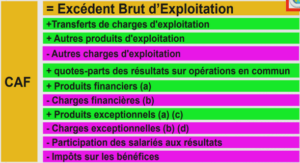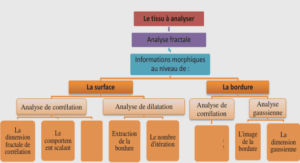Multi-Level Converters Topologies
Many industrial applications necessitate power capabilities from medium power to high power. For example, motor drives and utility applications need medium voltage and megawatt levels of power. In medium to high-voltage power applications, multi level converters can be a convenient alternative, due to the fact that the rating limitations of power electronic components disallow connecting for only one power semiconductor switch. They also represent a convenient choice for renewable energy systems. Thus, in the past years, a number of multi-level topologies have emerged (Khomfoi et Tolbert, 2007; Tolbert et Peng, 2000) .
There are a different multilevel inverter topologies have been presented (Franquelo et al., 2008; Kouro et al., 2010; Rodriguez, Jih-Sheng et Fang Zheng, 2002) according to the following steps.
The Cascade H-Bridge
Generally utilized in power drives such as high or medium-voltage (Wu, Converters et Drives, 2006). The cascaded H-Bridge multilevel inverter comprises multiple units of singlephase H-Bridge inverters serially connected in each phase.
The Neutral Point Clamped
A Neutral Point Clamped multilevel invert’s leg was originally proposed by (Nabae, Takahashi et Akagi, 1981) after which the three-level Neutral Point Clamped found numerous applications and usages in many industries (Rodriguez et al., 2010) “The clamped diodes (D1a, D2a) are linked to the DC capacitors’ neutral point, resulting in adding a zero level to the output voltage. Therefore, in a three-level Neutral Point Clamped, the output voltage is constituted of -Vdc, 0 and +Vdc. When S1a and S2a are ON, the output is + Vdc. When S3a and S4a are ON, the negative voltage appears at the output which is – Vdc. Finally, if S2a and S3a are ON, the voltage at the point (a) will be 0. S3a complements S1a and the same for S2a and S4a. As an example, when S1a is ON, S3a is OFF. This topology’s main advantage is in the fact that it is flexibly controllable by space vector modulation (Lewicki, Krzeminski et Abu Rub, 2011; Rojas, Ohnishi et Suzuki, 1995) additionally to PWM. With this characteristic the Neutral Point Clamped becomes a multilevel inverters’ topology that is favored by researchers, for them to develop its control strategy, by presenting and testing a number of different methods of control (Bor-Ren et TaChang, 2004; Das et Narayanan, 2012). However extensively utilized in applications, of high power the Neutral Point Clamped topology is seen as having the following drawbacks balancing the capacitors voltages and unequal loss distribution among switches”.(Vahedi, 2016) .
The Diode-Clamped (DC) Topology
The diode-clamped multilevel inverter is among the main multilevel inverter topologies. The single-phase types of these inverters have been characterized as not having redundant states. Significantly, such states are suitable for reducing devices switching frequency throughout the inverter operation, and hence for reducing switching power losses and targeted to electromagnetic distortion influence. They also enhance other features of inverter performance for example enabling capacitor voltage balancing. It consists in using a number of diodes that will obstruct small DC sources.
“Extending the DC topology to a collective number of level configurations is easy. In a threelevel diode-clamped inverter, the DC bus voltage is separated by capacitor banks into two steps of the same voltage. The inverter’s functioning is simple. The DC topology’s name derives from the voltage between two switches being attached through the clamping diodes. When switches (S1,S2) are on and (S1ʽ,S2ʽ) are off, the inverter’s output voltage is equal to the voltage of C1, which is equal to(+E)/2. Similarly, when switches (S1,S2) are off and (S1ʽ,S2ʽ) are on, the inverter’s output voltage is equal to C2’s voltage, which is equal to (- E)/2. When (S2, S1ʽ) are on and (S1, S2ʽ) are off, the inverter’s output voltage is equal to 0. In a five-level diode-clamped inverter, the DC bus voltage is divided into four steps of the same voltage. Here, the number of diodes needed to clamp the voltage changes point after point. Each diode is set to supply voltage blocking across one capacitor. For example, only one diode represents D1, while three diodes equal to D1 represent D1’, diodes that are in series because they must obstruct voltage through capacitors C2, C3 and C4; in other words, it allows using one diode with higher blocking capacity or three diodes placed in series with same blocking capacity as D1. Considering the diode reverse voltage for a number of level inverters, formulated by V_r=E/(n-1), for a five-level inverter’s -diode revers voltage is equal to E/4, therefore proving that raising the number of levels decreases the components’ voltage stress”.(Vahedi, 2016) .
CHAPTER 1 LITERATURE REVIEW |






